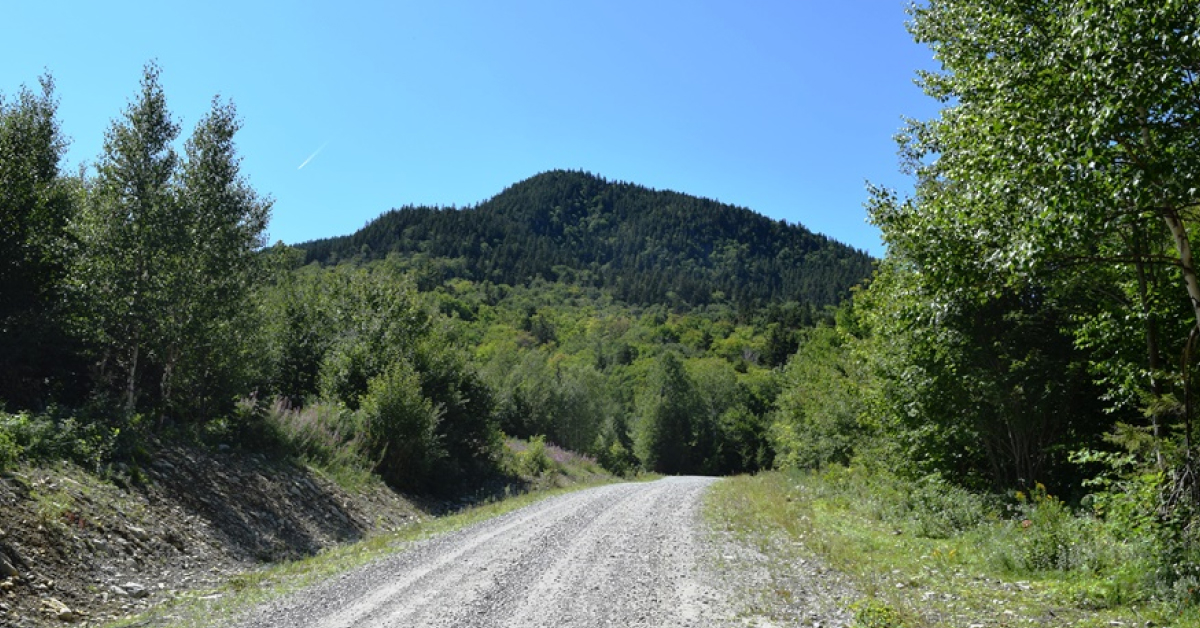
There's nothing quite like the panic of realizing you're about to run out of gas in a remote area with no cell service and a flight to catch.
You start to recount your mistakes: not fueling up as you passed an endless stream of gas stations. Following Google Maps instead of taking the way you knew. Watching your cell signal go from 1 bar to SOS. Not turning back when the route started using backroads.
When the road turned from paved to gravel, that was a statement: we were getting farther off the grid. But it was too late: we didn't have enough gas to double back. We had to push through the wilderness and refuel.
Google Maps showed a blue arrow driving through a blank screen. But Robin got a signal on his phone and found a gas station about five miles away. We guessed we had about half a tank, or 15 miles, left.
When we arrived at the location, there were a few small buildings but no gas station. We panicked and drove out of town, only to find the road closed for construction. We doubled back. The gas station had to be here.
That's when Robin realized the general store, Dresden Take Out, had an old school gas pump.
Fast forward an hour, we're sitting on the patio of Novare Res Bier Cafe in Portland, Maine, and it hits me: we came to Maine to put fuel in our own tank. And somehow, it worked.
We arrived in Maine the week before, running on fumes. A few months earlier, we had decided to rebuild our product from the ground up with a July 1st launch date.
Just like we hoped we'd find gas around the next bend, we'd been telling ourselves the July launch was doable. We had our route planned out, we were both locked in, working 7 days a week. What could go wrong?
As our launch date approached, we worked harder and longer. Our backlog got harder and longer, too. It was like the road had turned from paved to gravel and our phones went into SOS mode.
When our launch date came and went, our first instinct was: put our heads down, work harder, “fix everything.”
But something felt different this time. Maybe it was the exhaustion, or maybe we'd finally learned something after a year of similar cycles. We made a decision that I didn’t see in any of the startup books.
We joined our friends at a cabin in Maine.
Instead of doubling down on the grind, we decided to work less. Be together in real life instead of staring at each other through Zoom squares. Get inspired instead of just grinding through tickets.
It felt irresponsible. It felt like exactly what we needed.
We established a rhythm that was very different from what we had been doing:
Wake up at 5 AM. Coffee with our buddies overlooking the lake. Group hike through the woods. Swim in the lake. Cook breakfast together.
Then we'd drive 12 minutes to Midcoast CoWork (lots of gas stations, by the way. A great way to leave town when your gas light is already on empty. But why do that when you can blindly follow Google Maps into a near crisis). Work 10 AM to 5:30 PM, no lunch break, full focus. Then pencils down.
Swim again. Dinner with friends. Cards and music until we were more excited about the next day than squeezing another hour out of this one.
On our last day, something clicked.
Robin had been wiring up our upgraded prediction engine for a few weeks. We had been averaging about 5K data chunks per research report (a “chunk” here being a relevant section of a document that we use as signal for our analysis).
On our last day, he connected all the new functionality for the first time and got 40K chunks on our first test. An 8x increase.
We're looking good for an August 1st launch. The front-end is clean and focused. The backend is now pulling in a broad set of research: brand signals, competitor analysis, blogs, email newsletters, social media conversations, and organic search trends.
Sometimes the best thing you can do for your startup is step away from your startup. Sometimes putting fuel in your own tank is exactly what your product needs.
© 2025 Forecast.ing, Inc. All Rights Reserved.